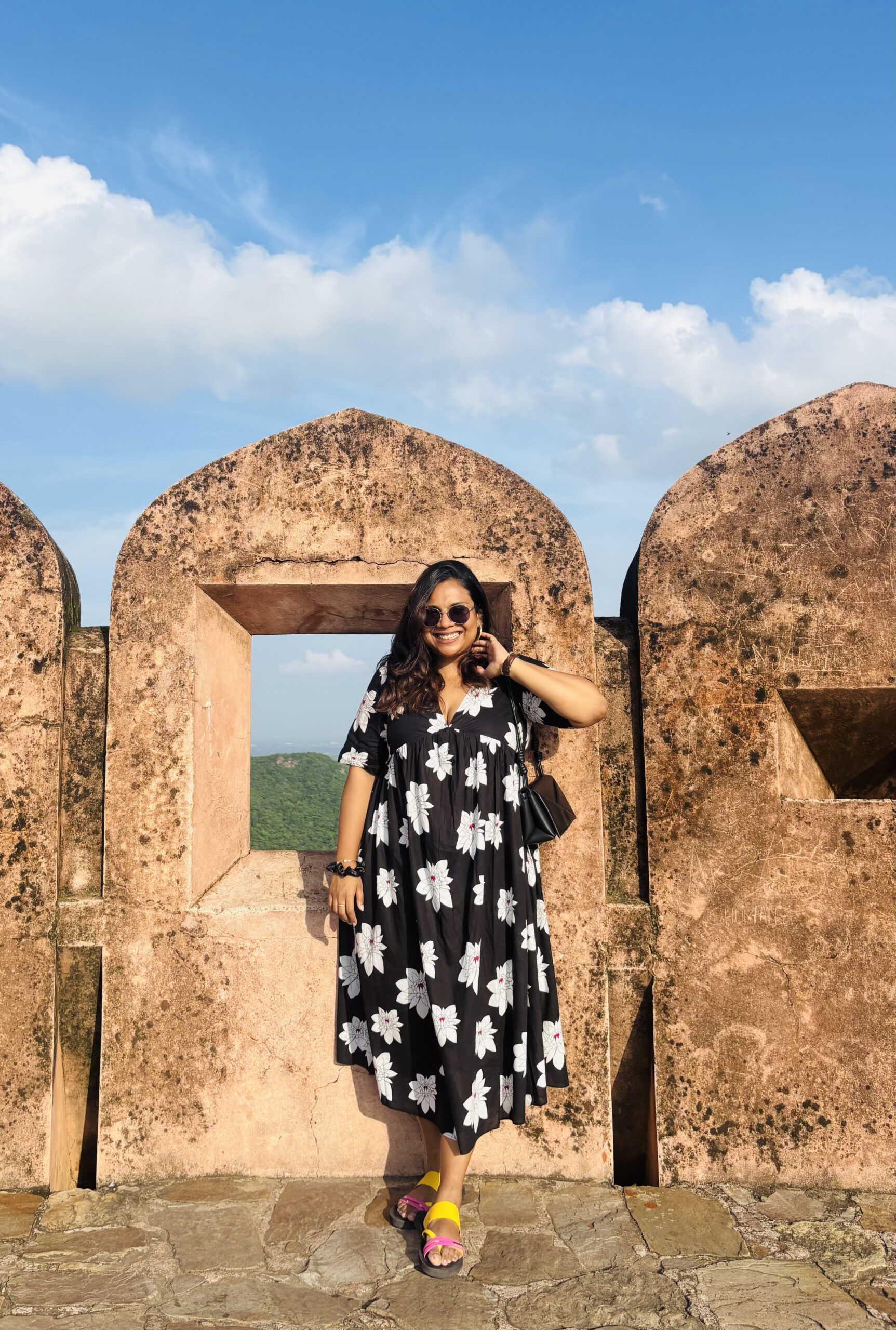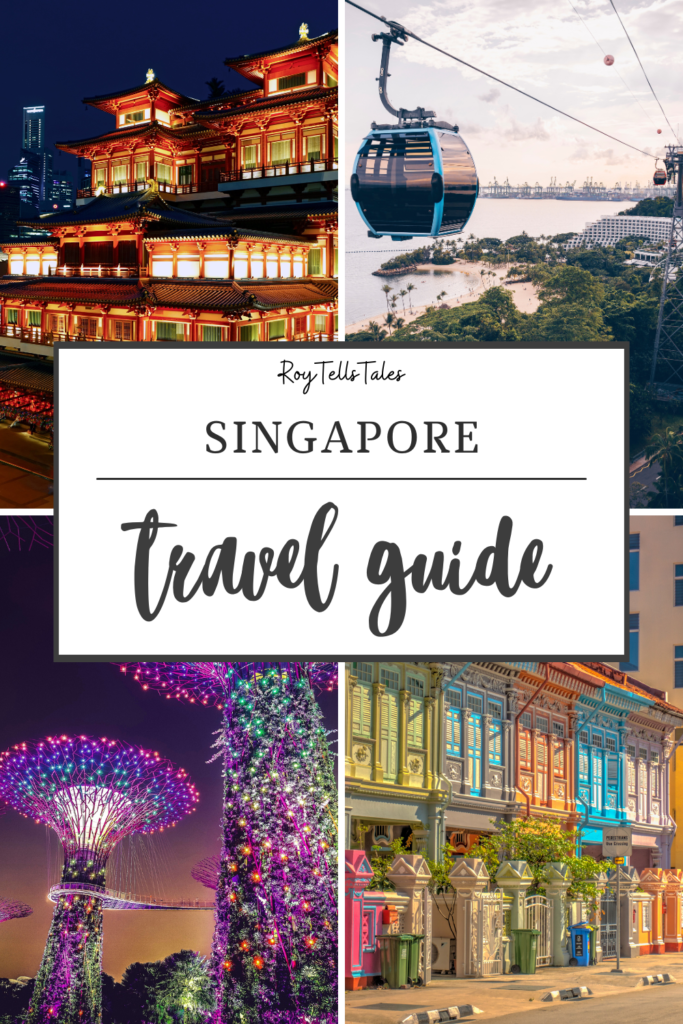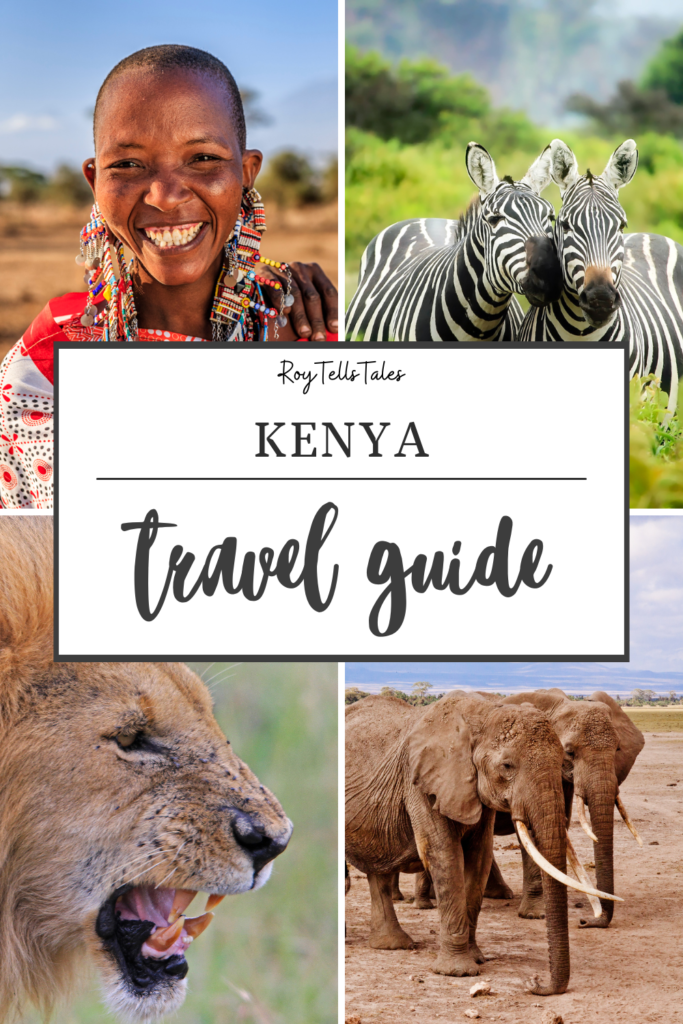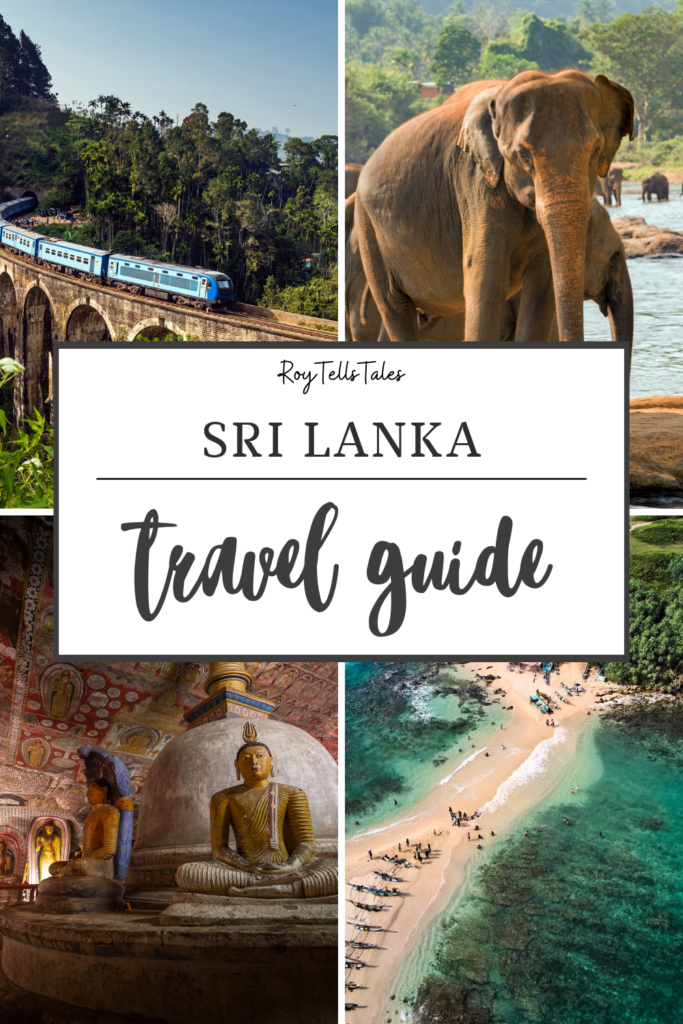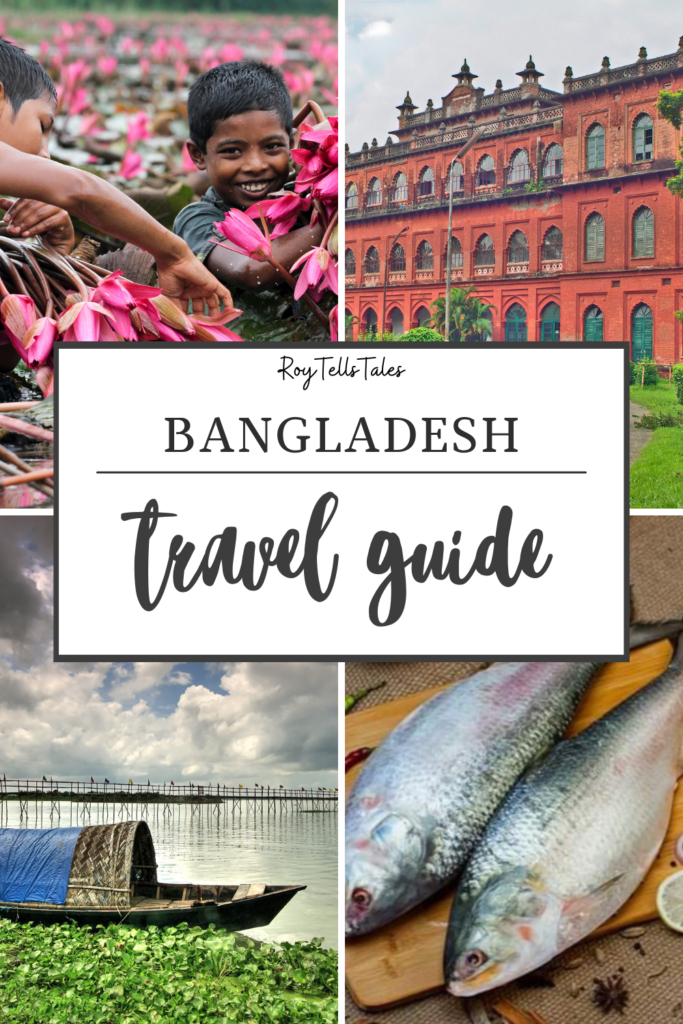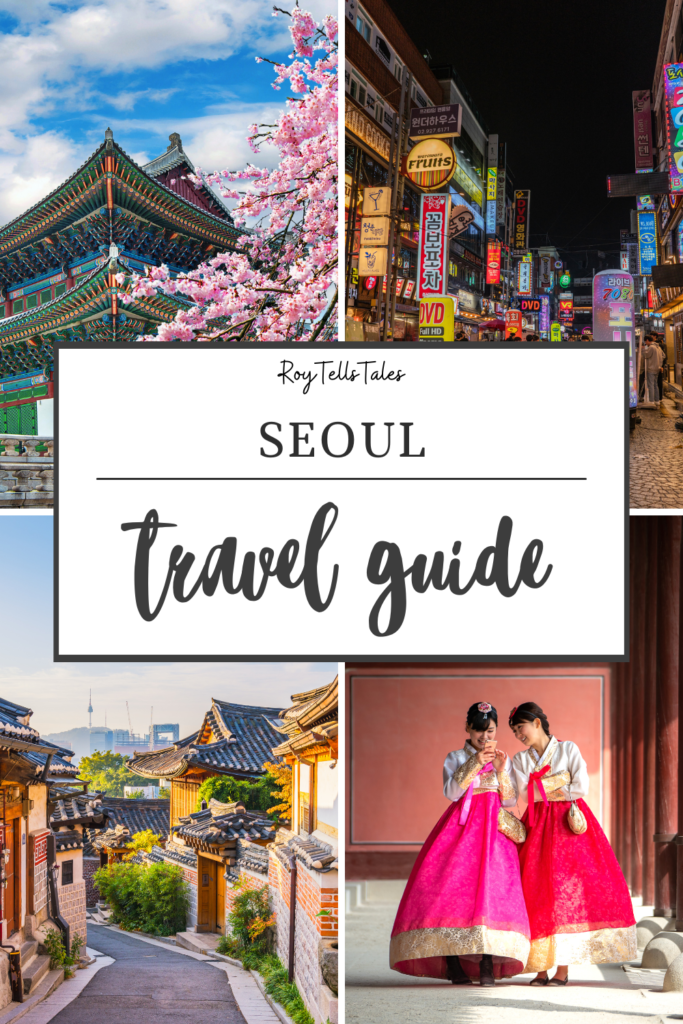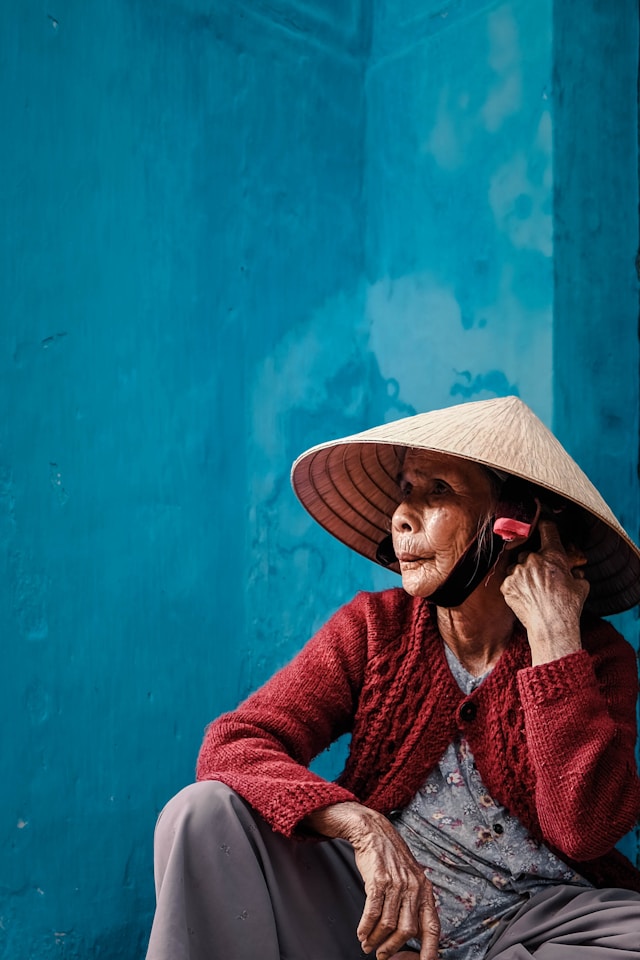

Travelling to Vietnam for the First Time? Bookmark This Guide
Well, a country with 3,000 kilometres of tropical coastline, tantalising cuisine, fascinating history, and captivating culture is a sought-after destination for travellers across the world. Whether you’re a beach lover, an art enthusiast, a passionate foodie, or an adventure seeker, Vietnam offers something extraordinary for everyone.
Personally, Vietnam holds a special place in my heart as it was the last country I visited before the global pandemic disrupted our lives. I cherished unforgettable moments in Saigon and went on to explore the charming destinations of Nha Trang and Da Lat.
In 2022, I had the privilege of returning to Vietnam, this time to explore the northern region of the country. From the vibrant city of Hanoi to cruising through the enchanting Ha Long Bay, delving into the historical wonders of the Imperial Citadel of Hue, and stepping back in time in the charming town of Hoi An, my journey was filled with awe-inspiring experiences.
And then, in 2024, I took another trip to Vietnam, to spend 20 days in Hoi An and then explored Sa Pa and hiked up to Fansipan, the highest point of the Indochina Peninsula.
[Also read: 8 Days in Vietnam Itinerary]
In this article, I’ve answered the frequently asked questions that might pop up in your mind while planning a trip to Vietnam.
How much does it cost for the visa?
The cost for visa approval for Indian passport holders is as follows:
- USD 35 (approx 2800 INR) for a one-month, single-entry or multiple-entry visa
- USD 45 (approx 3600 INR) for a three-month, single-entry visa
- USD 65 (approx 5300 INR) for a three-month, multiple-entry visa
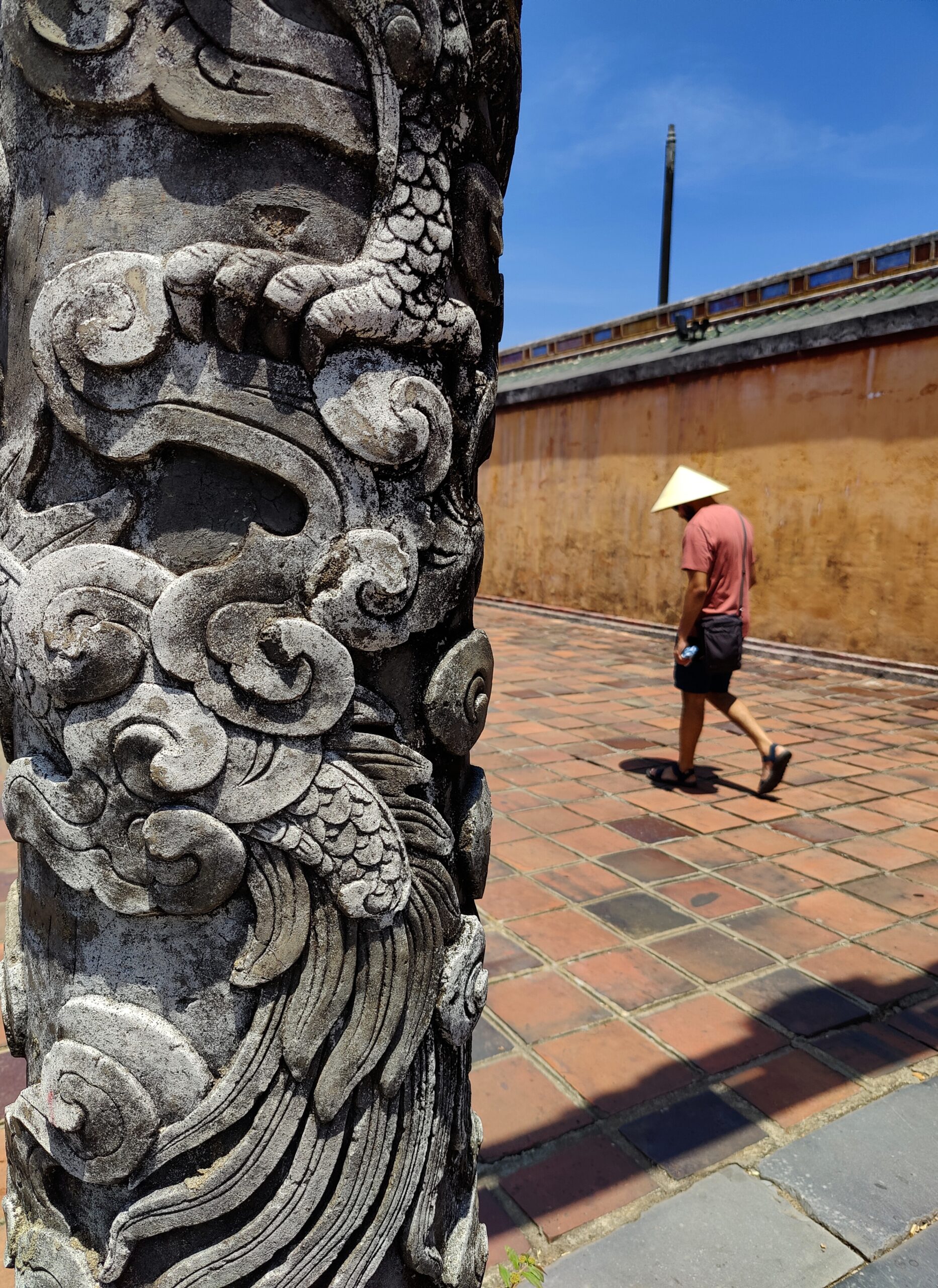
How to travel to Vietnam from India?
Travelling from India to Vietnam is simple and straightforward. The easiest way is to fly, but if you’re already exploring Southeast Asia, overland travel is also possible.
By Air: The Easiest and Most Popular Option
Vietnam’s two major international airports are:
Tan Son Nhat International Airport in Ho Chi Minh City (South Vietnam)
Noi Bai International Airport in Hanoi (North Vietnam)
You’ll find flights from major Indian cities, including:
Delhi
Mumbai
Bangalore
Hyderabad
Kolkata
Goa
Ahmedabad
Aurangabad (via connecting flights)
Airlines that frequently operate between India and Vietnam include:
VietJet Air (often the most affordable option)
Air India
Malaysia Airlines
Thai Airways
Singapore Airlines
Travel tip: Round-trip fares from Delhi to Hanoi can start as low as INR 16,500 if booked well in advance—so keep an eye out for deals, especially if you’re planning to travel during the shoulder seasons.
By Road: For the More Adventurous
If you’re already in Southeast Asia, you can also enter Vietnam by land through neighbouring countries like Cambodia or Thailand.
Popular overland routes:
Phnom Penh (Cambodia) to Ho Chi Minh City – Regular international buses connect these two cities.
Bangkok (Thailand) to Ho Chi Minh City – A longer route that usually includes a stopover in Cambodia.
Note: Make sure your Vietnam e-visa is valid for land entry through the border crossing you’re using.
What is the best time to travel to Vietnam?
I’ve been to Vietnam three times, and each trip gave me a different feel for the country’s rhythm and seasons.
My first visit was in December, when I explored Saigon, Da Lat, and Nha Trang. The weather was lovely, with cooler, crisp evenings and sunny days. It felt like the perfect time to travel, especially in the Central Highlands and along the coast.
The second time, I went in July and covered the northern and central regions – Hanoi, Ha Long Bay, Da Nang, and Hoi An. Everything was lush, green, and alive, but I have to admit the humidity was brutal. It rained often, and while that added to the charm of places like Hoi An, it also made it exhausting at times.
My third trip was in May, when I did a mix of north and central Vietnam – Hoi An, Hanoi, and Sa Pa. The temperatures were already starting to rise, especially in the north, but it was manageable and still beautiful.
If there’s one thing I’ve learned, it’s this: the best time to visit Vietnam really depends on where you’re going and what kind of experience you’re after. Because of its long, narrow shape, Vietnam has a surprisingly diverse climate—what’s dry and cool in one region could be hot and rainy in another.
That said, spring (February to April) and autumn (August to October) are generally considered the sweet spots. The weather is relatively stable, temperatures are moderate, and most regions are enjoyable to explore.

Here’s a breakdown of the weather conditions in different regions of Vietnam during different seasons:
Northern Vietnam (Hanoi, Halong Bay, Sapa):
> Spring (February to April): Mild temperatures and low rainfall.
> Autumn (August to October): Pleasant temperatures and low rainfall.
> Winter (December to February): Cool temperatures, occasional fog, and higher chances of rainfall.
> Summer (May to July): Hot and humid with occasional heavy rainfall.
Central Vietnam (Hue, Da Nang, Hoi An):
> Spring (February to April): Pleasant temperatures and low rainfall.
> Summer (May to August): Hot and dry, with occasional showers.
> Autumn (September to November): Mild temperatures and low rainfall.
> Winter (December to January): Cooler temperatures with occasional rain.
Southern Vietnam (Ho Chi Minh City, Mekong Delta, Phu Quoc):
> Dry season (November to April): Hot temperatures with lower humidity and minimal rainfall.
> Rainy season (May to October): Higher temperatures, high humidity, and frequent rain showers, often in the form of short bursts in the afternoon.
Note: Check the weather updates while planning your trip. Exploring some places in Vietnam involves a lot of walking, so it’s always better to travel when the weather is pleasant.

What language is spoken in Vietnam?
The official language of Vietnam is Vietnamese. Once you land, you’ll quickly notice that English isn’t widely spoken, especially outside the main tourist areas.
In places like Hanoi, Ho Chi Minh City, Da Nang, and Hoi An, you’ll usually get by at hotels, restaurants, and tour agencies, where basic English is understood. Tour guides in popular destinations generally speak enough English to communicate clearly.
That said, don’t expect smooth conversations everywhere. I remember struggling quite a bit with cab drivers and local vendors – hand gestures and confused smiles were our go-to! Thankfully, Google Translate saved the day more times than I can count.
If you’re heading to less-touristy places or taking local transport, it’s a good idea to learn a few basic Vietnamese phrases or have a translation app handy.
A little effort goes a long way, and locals really appreciate it when you try!

What is Vietnam’s currency?
Vietnam uses the Vietnamese Dong (VND) as its official currency, and trust me, once you exchange your Indian Rupees, you’ll feel like a millionaire!
To give you a rough idea, INR 1 equals around 290–300 VND, depending on the exchange rate. That means INR 100 can easily get you a cup of rich, aromatic Vietnamese coffee, and not just any coffee, we’re talking about the real deal with condensed milk or egg foam.
I still remember this one dinner Sourav and I had – a full meal for two, complete with two glasses of wine, all for just 340 INR. I had to do a double-take. It really felt like a luxury on a backpacker’s budget!
If you’re someone who loves a good bargain and amazing food, Vietnam is pure joy.
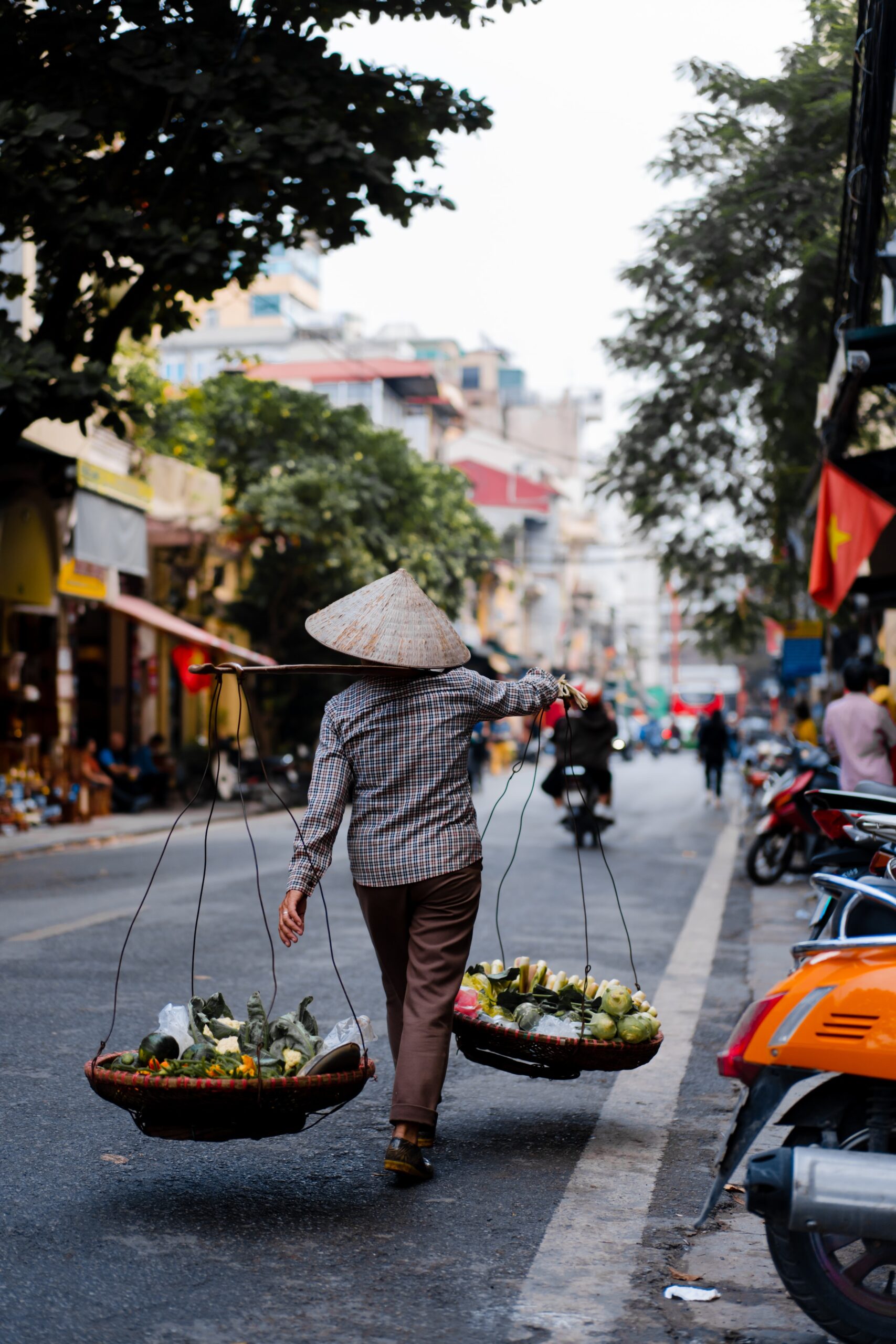
Should I get a local SIM Card while in Vietnam?
Just like while travelling to any other country, you can get international roaming activated on your number for Vietnam too, but I’d suggest against it as it’ll surely end up costing you more. So, instead, reach the airport and get yourself a local Viettel SIM for about 300k VND (INR 1100), or if you can wait, you might get the same plan for cheaper in the city or during your stay. The SIM had great connectivity almost everywhere we went.
Which are the most popular festivals in Vietnam?
I believe that to know a country closely, two things are very important – first, trying their local cuisine and secondly, attending the local festivals.
Vietnam is a country rich in cultural festivals, providing visitors with a wonderful opportunity to experience its vibrant traditions. The Vietnamese Lunar Calendar sets the stage for numerous festivals held throughout the year.
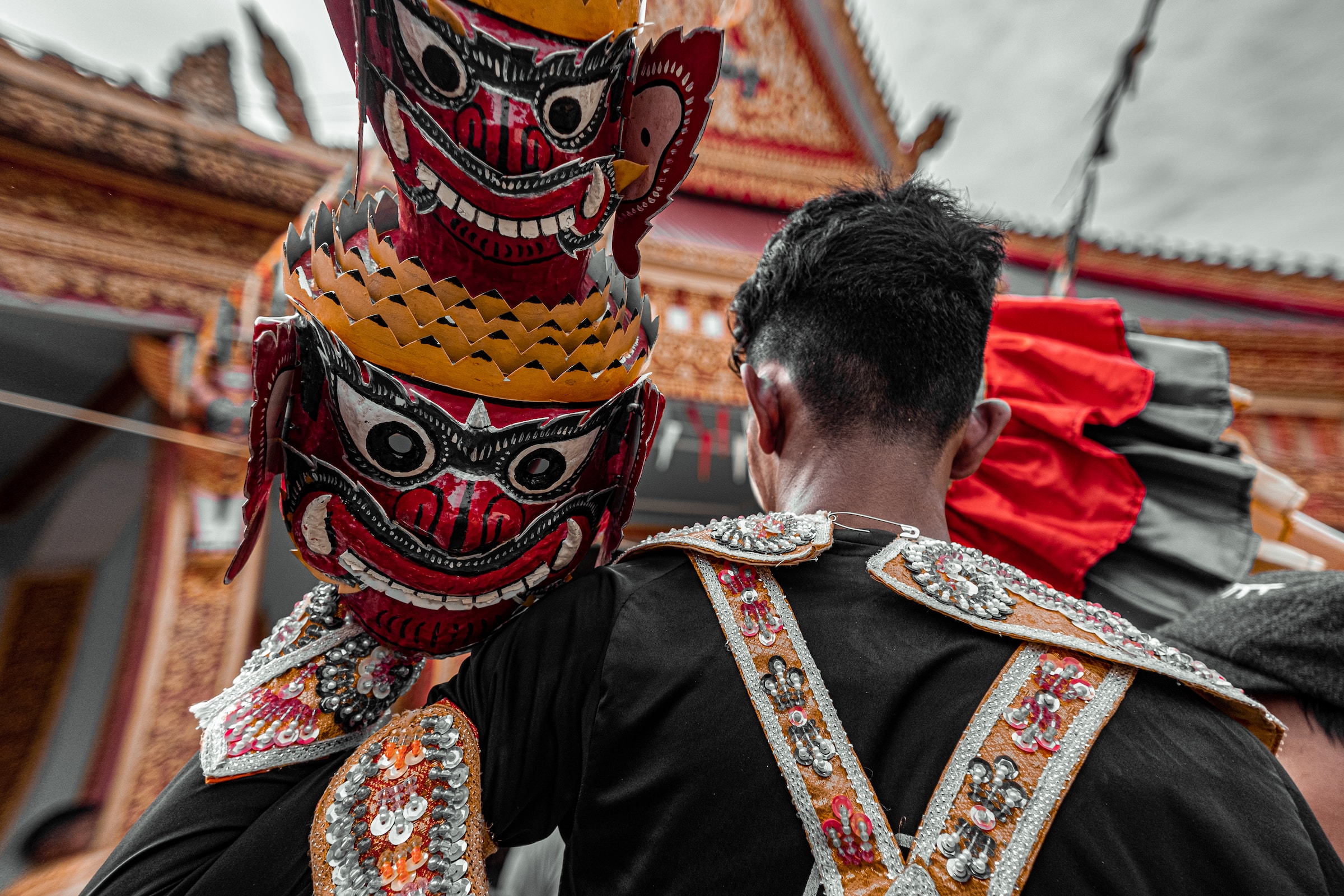
Here’s a list of the most popular festivals that are worth witnessing:
Tet Festival (Lunar New Year): Tet is the most significant and widely celebrated festival in Vietnam. It marks the beginning of the Lunar New Year and typically falls in late January or early February. Streets are adorned with colourful decorations, and vibrant dragon and lion dances can be witnessed.
Lim Festival: The Lim Festival takes place in Bac Ninh province and is dedicated to Quan Ho singing, a traditional form of Vietnamese folk music. Travellers can witness captivating performances by local singers dressed in traditional costumes.
National Day (Vietnam Independence Day): Celebrated on September 2nd, National Day commemorates the declaration of independence from French rule in 1945. Patriotic events, parades, fireworks, and cultural performances throughout the country mark the day.
Tet Trung Thu (Mid-autumn Festival): Also known as the Moon Festival, Tet Trung Thu celebrates the harvest season and is particularly popular among children. Colourful lanterns are lit, lion and dragon dances are performed, and mooncakes (a traditional pastry) are shared.
Perfume Pagoda Festival: This religious festival takes place at the Perfume Pagoda, a complex of Buddhist temples in Hanoi. Pilgrims visit the pagoda, located in a scenic area surrounded by mountains and caves, to pray for blessings and make offerings.
Cau Ngu Festival: Celebrated in coastal fishing communities, the Cau Ngu Festival is dedicated to the Sea God. Fishermen pray for a prosperous fishing season, safe voyages, and a bountiful catch.
Nui Ba Festival: Held at the Ba Den Mountain in Tay Ninh province, this festival is a blend of religious and cultural traditions. Pilgrims climb the mountain to visit temples, pray for good fortune, and take part in vibrant ceremonies and performances.
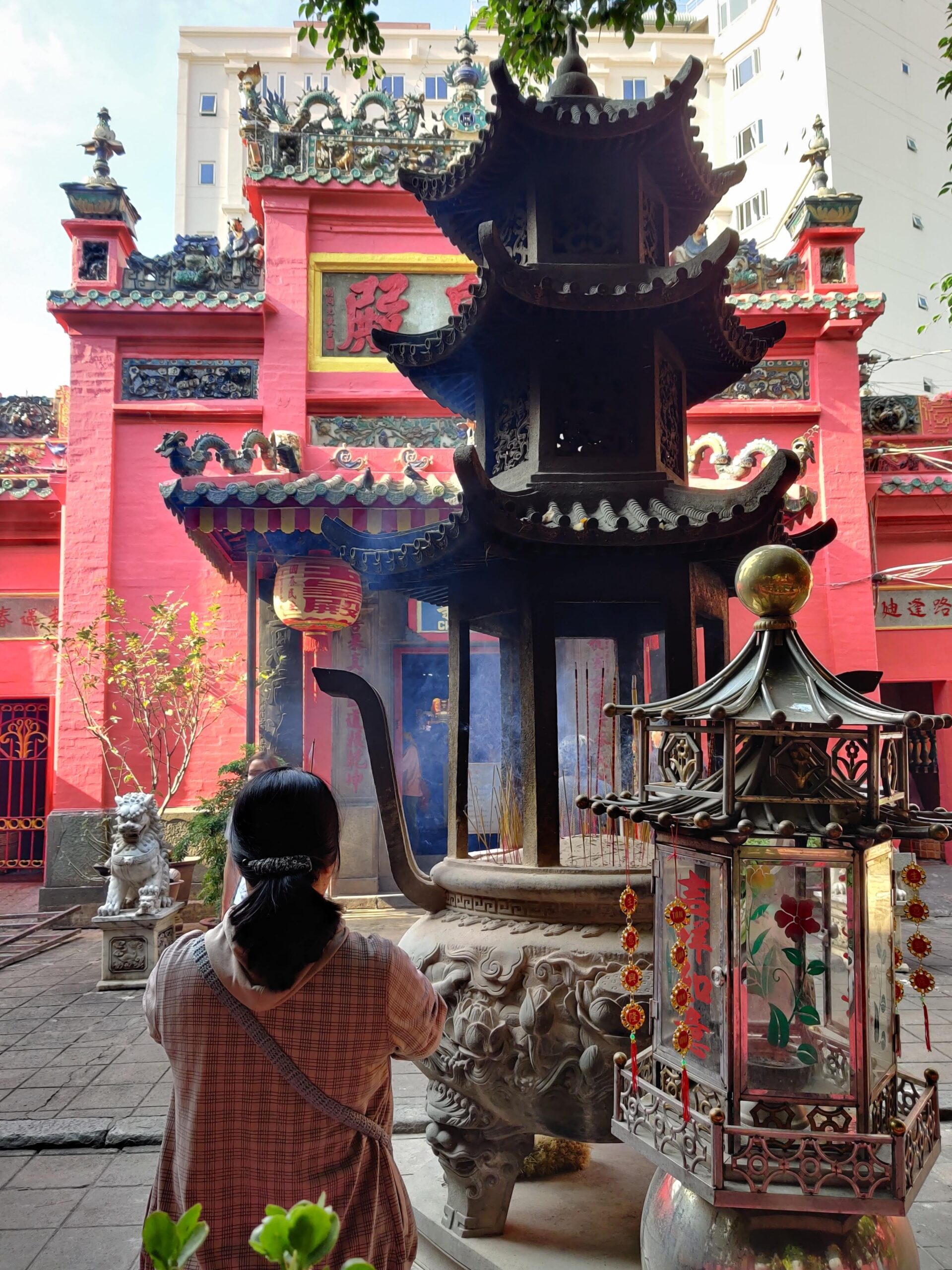
What to eat when you’re travelling to Vietnam?
If you’re a non-vegetarian, you’ll be in for a treat here! When it comes to Vietnamese cuisine, there is a plethora of delectable dishes to explore and savour. From flavorful street food to hearty traditional meals, here is a detailed account of what to eat in Vietnam:
Pho: Pho is Vietnam’s iconic noodle soup, made with rice noodles, savoury broth, and tender slices of beef or chicken. It is typically garnished with fresh herbs, bean sprouts, lime, and chilli for added zing. Pho is a must-try dish that epitomises Vietnamese cuisine.
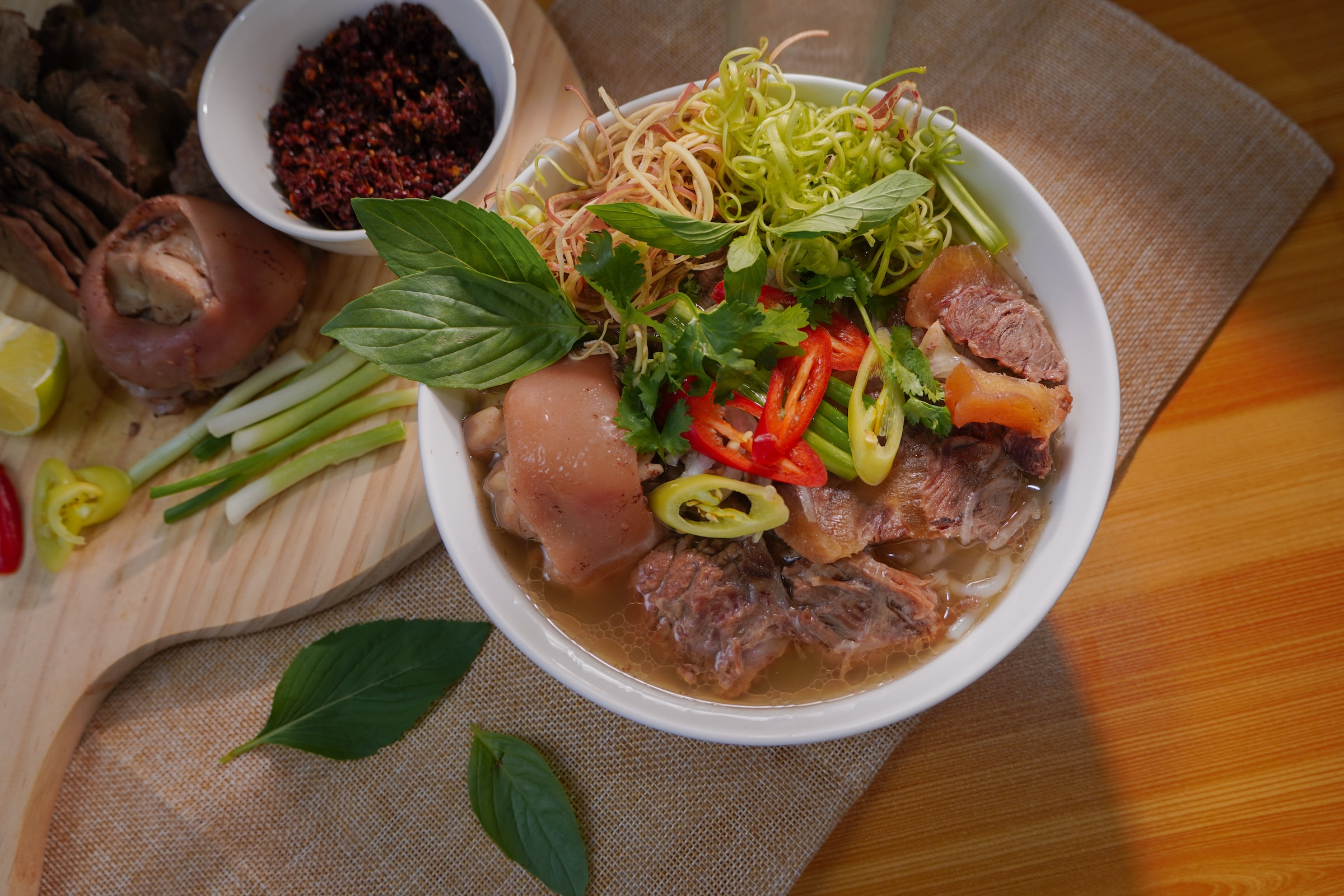
Banh Mi: Banh Mi is a delicious Vietnamese sandwich with French influences. It features a crispy baguette filled with a variety of ingredients, including grilled meats (such as pork, chicken, or beef), pâté, pickled vegetables, cilantro, and chilli sauce. This delightful combination of flavours and textures makes it a popular choice.
Bun Cha: This Hanoi speciality consists of grilled pork patties and sliced pork belly served with vermicelli noodles, fresh herbs, lettuce, and a dipping sauce. The smoky and savoury flavours of the grilled meat paired with the freshness of herbs make it a mouthwatering dish.
Cao Lau: Originating from Hoi An, Cao Lau is a unique noodle dish made with thick, chewy rice noodles, tender slices of pork, crispy pork rinds, bean sprouts, and fresh herbs. It’s topped with a flavorful broth and often garnished with lime and chilli.
Banh Xeo: Banh Xeo is a savoury Vietnamese pancake filled with a combination of shrimp, pork, bean sprouts, and green onions. The pancake is crispy, and it’s typically wrapped in lettuce or rice paper along with herbs and dipped in a tangy sauce.
Goi Cuon: Also known as Vietnamese spring rolls or fresh rolls, Goi Cuon is a refreshing dish made with rice paper wrappers filled with fresh herbs, vermicelli noodles, shrimp, pork, or tofu. It’s often served with a peanut dipping sauce, adding a delightful nutty flavour.
Com Tam: Com Tam, or broken rice, is a popular dish in Southern Vietnam. It features a plate of fragrant broken rice accompanied by grilled pork, a fried egg, pickled vegetables, and fish sauce. It’s a satisfying and flavorful meal.
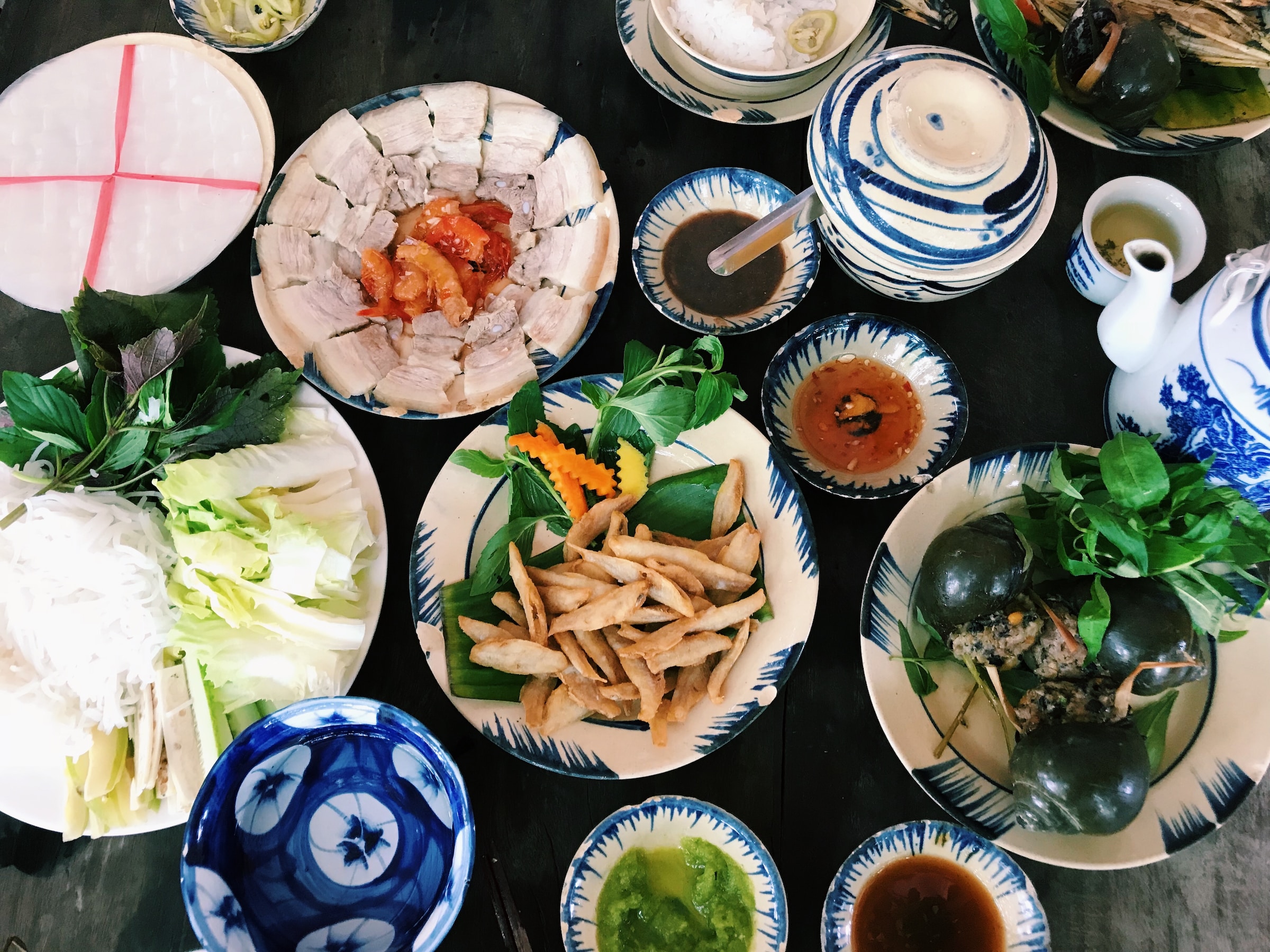
Mi Quang: Originating from Central Vietnam, Mi Quang is a vibrant noodle dish comprising rice noodles, turmeric-infused broth, shrimp, pork, herbs, peanuts, and crispy rice crackers. The combination of flavours and textures makes it a unique and tasty dish.
Ca Kho To: Ca Kho To is a caramelised fish dish simmered in a clay pot with a savoury and slightly sweet sauce. The fish is cooked until tender and served with steamed rice, making it a comforting and flavoursome meal.
Che: To satisfy your sweet tooth, try Che, a traditional Vietnamese dessert. Che encompasses a variety of sweet soups and puddings made with ingredients like mung beans, lotus seeds, coconut milk, agar jelly, and tropical fruits. It’s a delightful way to end a meal.
In addition to these dishes, Vietnam offers a wide range of street food, seafood delicacies, grilled meats, and regional specialities. Don’t miss trying Vietnamese iced coffee (ca phe sua da) and enjoying the vibrant street food scene found in bustling markets and alleys.
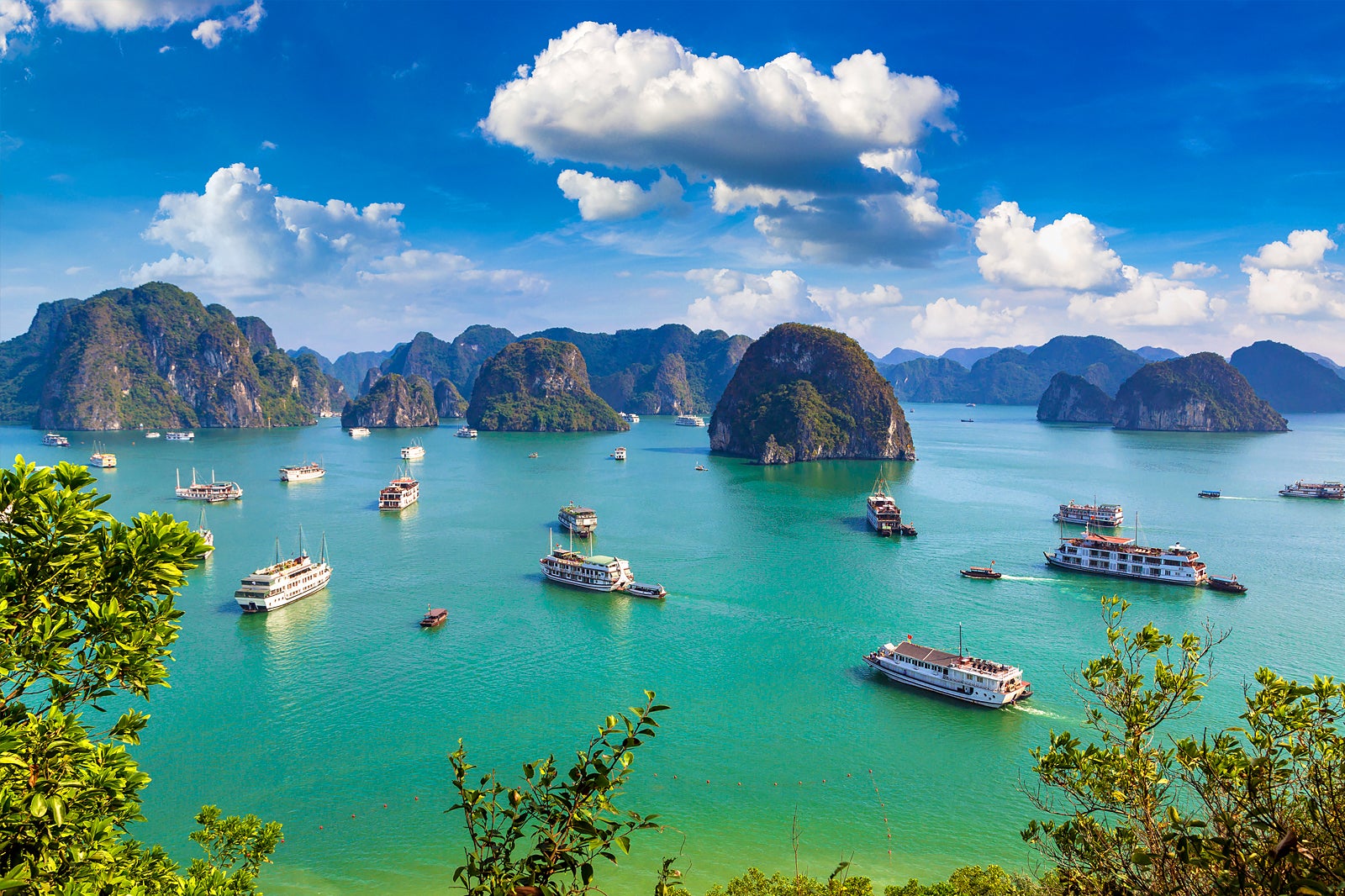
Which are the best places to explore in Vietnam?
Like I said earlier, one trip to Vietnam can never be enough (unless you’re planning to stay there for a month!). While I covered parts of Southern Vietnam during my first trip, and a bit of North & Central on my second, here’s a comprehensive list of places that you can consider while planning your trip:
North Vietnam:
- Hanoi: Immerse yourself in the bustling capital city with its rich history, charming Old Quarter, and iconic landmarks like Hoan Kiem Lake and the Temple of Literature. Don’t miss trying the local street food and exploring the vibrant night markets.
- Halong Bay: Cruise through the breathtaking limestone karsts and emerald waters of Halong Bay, a UNESCO World Heritage site. Explore hidden caves, enjoy kayaking, and witness stunning sunsets over the bay.
- Sapa: Trek through the stunning terraced rice fields of Sapa, located in the highlands. Discover the unique cultures of local ethnic minority groups and witness the mesmerising beauty of the mountainous landscape.
- Cat Ba Island: Explore the captivating beauty of Cat Ba Island, the largest island in Halong Bay. Relax on its beaches, hike through dense forests in Cat Ba National Park, and soak up the picturesque scenery.
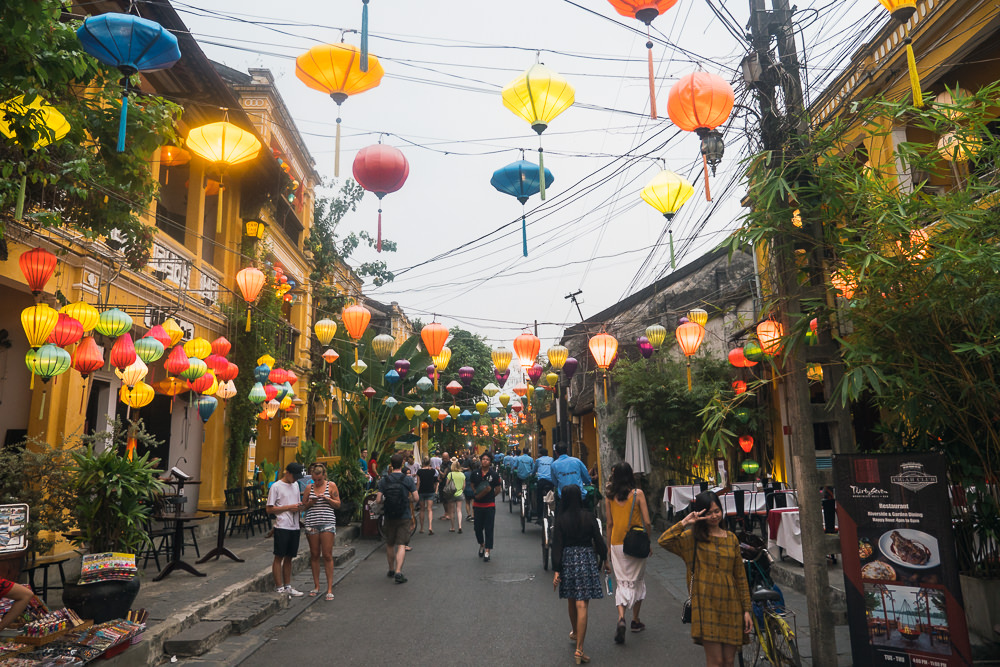
Central Vietnam:
- Hoi An: Step into a charming ancient town with its well-preserved architecture, lantern-lit streets, and vibrant riverside. Explore the colourful markets, visit ancient temples, and indulge in local specialities like Cao Lau noodles and Banh Mi.
- Hue: Dive into Vietnam’s imperial history by visiting Hue’s ancient citadel, royal tombs, and pagodas. Take a boat ride along the Perfume River and explore the local cuisine known for its delicate flavours.
- Da Nang: Enjoy the beautiful beaches of Da Nang and visit iconic attractions like the Marble Mountains and the famous Dragon Bridge. Experience the modern side of Vietnam while enjoying vibrant nightlife and delicious seafood.
- Nha Trang: Relax on the stunning beaches of Nha Trang, known for its pristine waters and vibrant coral reefs. Engage in water sports, explore nearby islands, and treat yourself to rejuvenating spa experiences.
- Ninh Binh: Discover the breathtaking landscapes of Ninh Binh, often referred to as “Ha Long Bay on land.” Cruise along the picturesque Tam Coc or Trang An River, surrounded by dramatic limestone karsts and lush greenery.
South Vietnam:
- Ho Chi Minh City: Dive into the energetic vibe of the largest city in Vietnam. Explore historical sites like the Reunification Palace and the War Remnants Museum, shop at bustling markets, and savour the diverse street food scene.
- Mekong Delta: Embark on a scenic boat trip through the Mekong Delta’s intricate network of rivers and canals. Discover floating markets, lush fruit orchards, and traditional villages while immersing yourself in the laid-back countryside.
- Phu Quoc Island: Unwind on the stunning beaches of Phu Quoc Island, known for its crystal-clear waters and coral reefs. Indulge in fresh seafood, explore national parks, and enjoy water activities such as snorkelling and diving.
- Da Lat: Experience the charming highland city of Da Lat, known for its temperate climate and picturesque landscapes. Visit flower gardens, explore French colonial architecture, and enjoy activities like canyoning and trekking. I was in Da Lat for just 48 hours, and had the time of my life!
Each region of Vietnam offers a unique experience, from cultural immersion in the north to the ancient charm of central Vietnam and the vibrant city life in the south.
How to travel in Vietnam?
Travelling in Vietnam is made easy by its well-connected network of roads, railways, and airways. While flying may not always be an option for every destination, reliable trains and buses offer comfortable alternatives, particularly for budget-conscious travellers exploring Vietnam’s tourism.
Buses and trains provide a smooth and comfortable journey, whether it’s a short three-hour ride or a longer 35-hour trip. Many buses in Vietnam offer amenities such as sleeper seats, washrooms, and free Wi-Fi, ensuring a pleasant travel experience. Air travel within the country is also reasonably priced, especially when booking tickets in advance, but be aware of luggage restrictions that may apply.

In larger cities, taxis are a popular mode of transport for tourists exploring Vietnam. You have the flexibility to hire a taxi for the entire duration of your trip or opt for shorter rides as needed. Services like Uber and Grab taxis are preferred options as they use meters to calculate fares, ensuring fair pricing for travellers.
To put it in the words of Lonely Planet: “A land of staggering natural beauty and cultural complexities, of dynamic megacities and hill-tribe villages, Vietnam is unforgettably compelling.” Well, after two trips to this country, I can’t agree more with this!
Given a choice, I will happily teleport myself to Hoi An and sit at a café in the Ancient Town, sipping on a cup of coffee, while reading a book. That’s my ideal life, I guess!
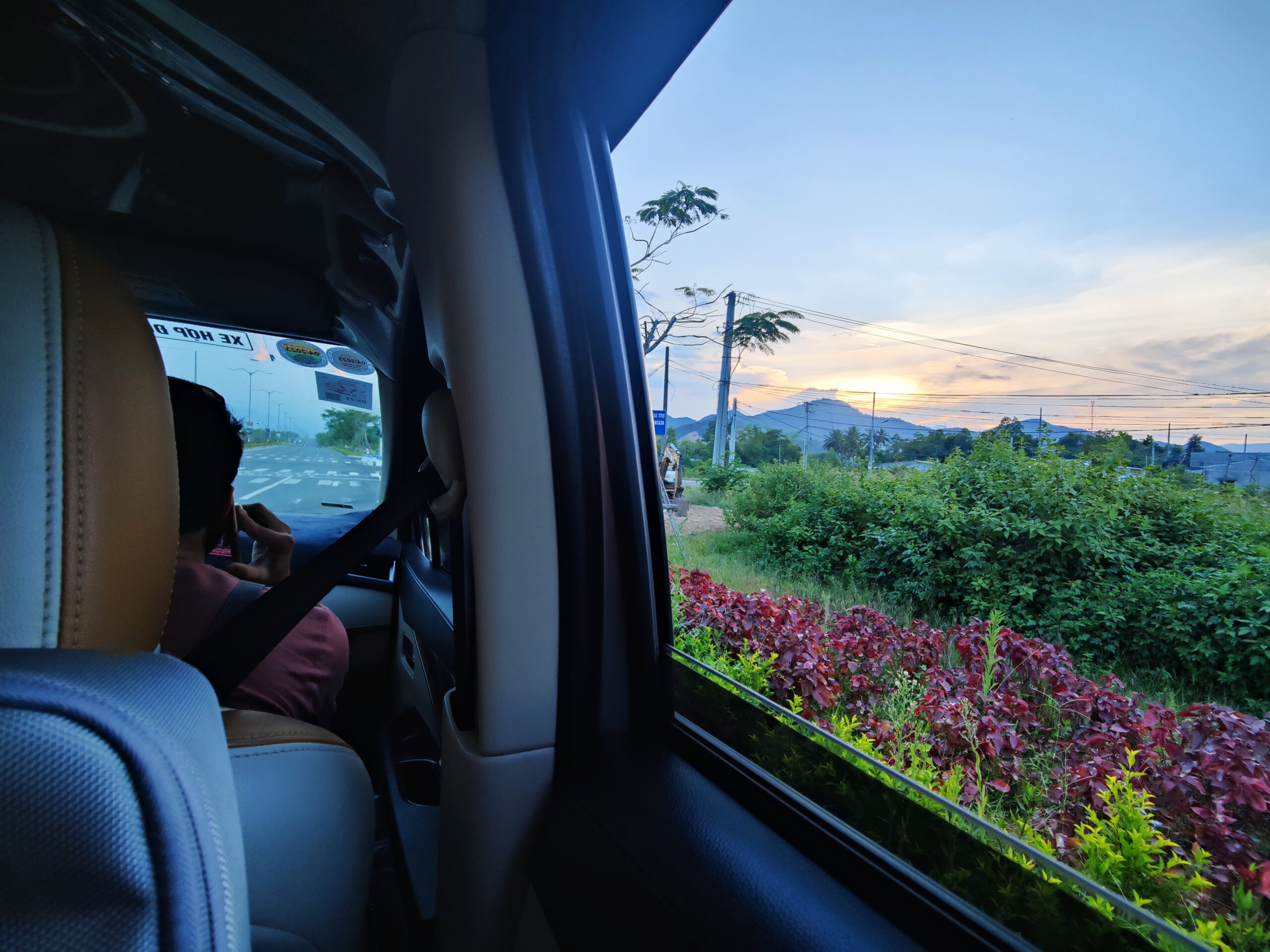
(Disclaimer: This post contains a few affiliate links. If you happen to click on any of them and make a purchase, I might earn a small commission, at no extra cost to you. Just know that I truly appreciate your support if you choose to do so.)



